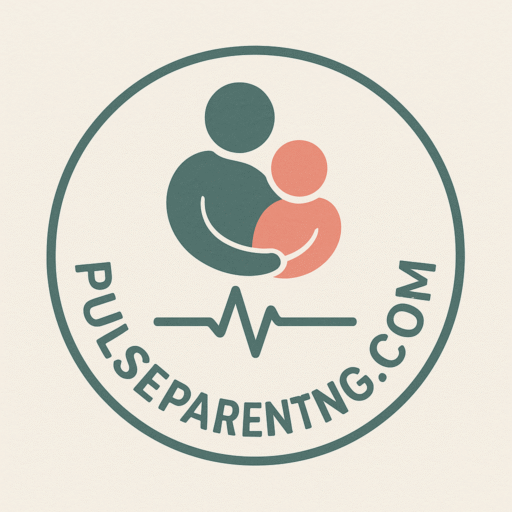Introduction
If your child has been struggling with anxiety, depression, or emotional regulation, you’re not alone — and you don’t have to figure it out by yourself.
More schools, hospitals, and community programs are joining forces to make sure students can get the mental health support they need, right where they are.
From school-based therapy and 504 Plans to intensive hospital programs, the landscape can be confusing at first.
This guide breaks it down — in plain language — so you know what options exist and how to find the right fit for your child. Please refer to 💛 Resources for Parents Supporting Students with Mental Health Needs for more resources.
🏫 1. Support Often Starts at School
The School Mental Health Team
Most schools now have mental health staff who can help identify needs and connect families to resources. Depending on your district, this team might include:
- School counselors: Short-term counseling, emotional support, and academic guidance.
- School social workers: Connect families to outside therapy, housing, and community programs.
- School psychologists: Conduct evaluations, behavior planning, and individual counseling.
- Nurses and behavior specialists: Support health plans, medication management, and classroom adjustments.
If your child is showing signs of distress — changes in grades, frequent absences, irritability, or isolation — start by emailing the counselor or social worker.
That one message can unlock a powerful web of help.
Schoolwide Supports
More schools are focusing on prevention and wellness for all students through:
- Social-Emotional Learning (SEL) lessons
- Positive Behavioral Interventions and Supports (PBIS)
- Calm corners or “reset” rooms
- Mindfulness activities
- Peer mentoring programs
These universal supports help students learn emotional regulation and stress management skills — long before a crisis hits.
📋 2. When Extra Help Is Needed: 504 Plans and IEPs
Sometimes mental health challenges interfere with a student’s ability to learn, attend, or participate in class. That’s when legal supports, like 504 Plans and IEPs, can make a world of difference.
504 Plans
A 504 Plan provides accommodations for students with a mental or physical health condition that “substantially limits” a major life activity, such as concentrating, learning, or sleeping.
Examples include:
- Break passes or a safe space to decompress
- Flexible deadlines or reduced workload during flare-ups
- Modified attendance expectations
- Check-ins with a trusted staff member
- Quiet testing rooms or noise-canceling headphones
IEPs
If your child’s mental health needs affect their educational performance and they require specialized instruction, an Individualized Education Program (IEP) may be appropriate.
IEPs often include:
- Counseling as a related service
- Social skills or coping skills instruction
- Behavior intervention plans
- Smaller or therapeutic class settings
👉 Tip: Request a 504 or IEP evaluation in writing. Schools must respond within set timelines, and you’re part of every decision.
🩺 3. Community & Medical Supports Beyond School
While schools handle day-to-day support, outside providers can offer therapy, evaluations, and more intensive care when needed.
Outpatient Services
- Therapy: Cognitive Behavioral Therapy (CBT), Dialectical Behavior Therapy (DBT), family therapy, play therapy, and more.
- Psychiatry: For diagnostic assessments and medication management.
- Telehealth: Convenient access for families who can’t travel regularly.
Intensive Levels of Care
When symptoms are severe or safety is a concern, hospitals and clinics offer higher levels of care:
- Intensive Outpatient Programs (IOP): Therapy several days a week, including skills groups and family sessions.
- Partial Hospitalization Programs (PHP): Full-day treatment programs where kids go home at night.
- Crisis Stabilization Units: Short stays for immediate safety and medication adjustments.
- Inpatient or Residential Treatment: 24/7 care when intensive, structured support is needed.
Many children’s hospitals now offer mental health urgent care centers — same-day assessments without waiting in a busy emergency room.
🔗 4. Bridging School and Outside Care
If your child is receiving therapy or attending a program, ask about signing a Release of Information (ROI). This allows your child’s therapist and school team to communicate and coordinate — with your consent.
When your child returns to school after treatment, request a re-entry meeting to review accommodations and plan a gentle transition.
This ensures teachers understand what’s needed for a smooth, supportive return.
🚨 5. When It’s an Emergency
If your child is in crisis or you’re worried about their safety:
- Call or text 988 (Suicide & Crisis Lifeline)
- Text HOME to 741741 (Crisis Text Line)
- Contact 911 and request a CIT-trained officer
- Go to the nearest emergency department or children’s hospital
You can also call your local children’s hospital’s mental health urgent care line for immediate guidance.
💬 6. Practical Tips for Parents
- Keep communication open and nonjudgmental — your child needs to know you’re listening.
- Save every email, evaluation, and report in one folder.
- Ask for copies of any 504 or IEP plans — and track progress.
- Build a support network: school, pediatrician, and therapist working together.
- Take care of yourself, too. Parenting a child with mental health needs takes strength and patience — and you deserve support as well.
❤️ Final Thoughts
Supporting your child’s mental health is a journey, not a single step. Whether it starts with a conversation at school, a therapy session, or a hospital visit, remember this:
There is a system of care — and you are not alone in navigating it.
Schools, hospitals, and community programs are working together more than ever to help kids heal, grow, and thrive.
Your voice matters. Keep asking questions, keep advocating, and keep hope close — because with the right support, kids don’t just get through challenges.
They rise above them. 🌱

